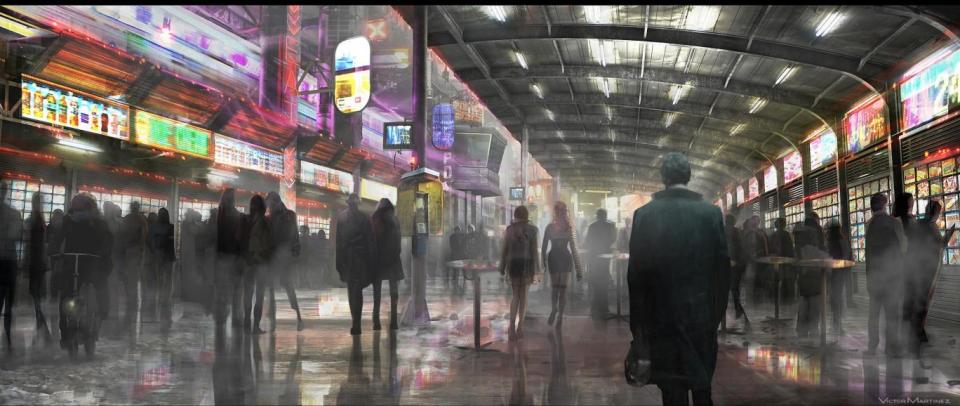Advertising our future

When Blade Runner came out in 1982 it electrified global audiences by imagining life in the not too distant future. The film quickly became a neo noir classic, and turned out to be remarkably prescient about the world of advertising. With pre-internet visions of digital content and moving-image billboards, Director Ridley Scott took the era’s advertisers’ most progressive ideas and gave the world a preview.
For Andrew Phipps Newman, CEO of DOOH.com - which stands for digital out of home - it inspired his life's work. “Blade Runner was the film that made me want to work in digital advertising. I knew that what I was watching wasn’t sci-fi, it was the future.”
Founded in 2013, Phipps Newman’s company DOOH now stands at the forefront of the industry. It specialises in interactive, live, dynamic and real time content on digital screens, be that at the half time at Twickenham or in Times Square’s neon circus.
DOOH collaborates with the most creative agencies to breath life into campaigns that truly break new ground. Iconic campaigns for agency Kinetic WW and brands including Lynx, Vodafone and The Sun have sparked consumer engagement that other types of advertising dream about. The latter - to promote coverage of 2016’s Premier League Football season - saw the newspaper’s circulation increase by 3%.

But it’s not all about boosting corporate bank balances. In 2015 DOOH harnessed the power of technology for good by working with deodorant brand Lynx and mental health charity CALM (Campaign Against Living Miserably) which works to prevent male suicide.
The resulting campaign #BiggerIssues spotlighted all the comparatively trivial things men talk about more frequently than suicide, such as superfoods and skateboarding dogs. In doing so #BiggerIssues held a mirror up to all the things that were dominating conversations and in doing so placed the spotlight on suicide. Awareness of the fact that suicide is the biggest killer of young men increased by 45%, and the campaign won DOOH.com and Kinetic the Cannes Lion Award.
Last year’s March for Giants campaign in collaboration with creative agency 18 Feet & Rising and media owner Ocean Outdoor sought to raise awareness of the elephant poaching crisis and fundraise for conservation charity Space for Giants.
It created the world’s first virtual moving herd of elephants to ‘march’ across global advertising screens, from Hong Kong to New York and London. More than 3,000 people joined in and created their own digital elephant, receiving a memento picture of their personalised animal marching through each city.
Mass-awareness campaigns like this often raise little or no actual money, but thanks to the all important big screen ‘wow’ factor, consumers and brands both recognised the excellent value exchange even though donators didn’t see their elephant in person.
This proven effectiveness of ‘right time, right place’ digital big-screen advertising has made it every brand’s priority - or top of the wishlist if budgets don’t allow. In an era when even those who work at newspapers admit print is dead, advertisers are increasingly turning to digital screens. Especially as the unpredictability of online advertising sees brands placed side by side with fake news or - worse still - real acts of terrorism.
Not only does digital big screen advertising offer total editorial control, it can be customised and adapted at a moment’s notice. Phipps Newman recently worked with Kinteic WW and B&Q, a longstanding player in the newspaper ad world who has recently come around the screens. Where once the homeware brand would need to plan what to advertise in advance, now they can be reactive.
“With real-time, relevant and reactive advertising B&Q can contextually serve the right promotion based on weather, location, stock levels - and even direct shoppers to the nearest store alongside it’s opening hours,” says Phipps Newman. "The possibilities for such dynamic advertising are enormous.”
Next week sees the release of Blade Runner 2049, picking up where Scott left off. The trailer shows star Ryan Gosling in front of a hologram billboard. Is that next?
“Absolutely,” says Newman, smiling. “The technology already exists, and the developments being made in virtual and augmented reality for everyday consumption in DOOH are incredibly exciting. The future of science fiction is fast becoming science fact”.
For more information visit www.dooh.com. Blade Runner 2049 is out 4 October

 Yahoo News
Yahoo News 
